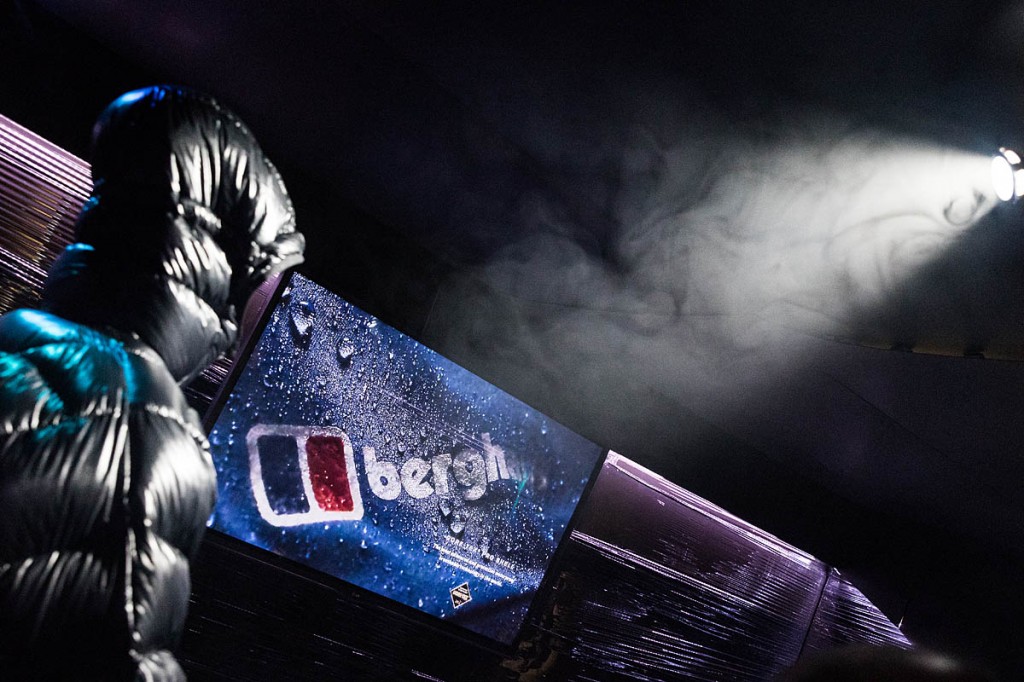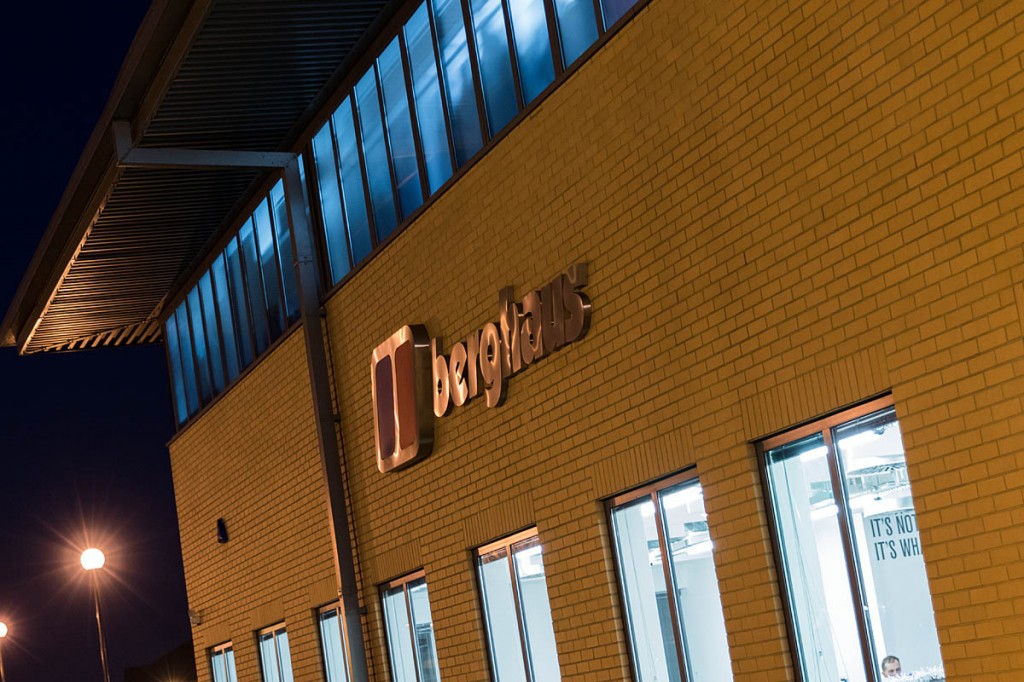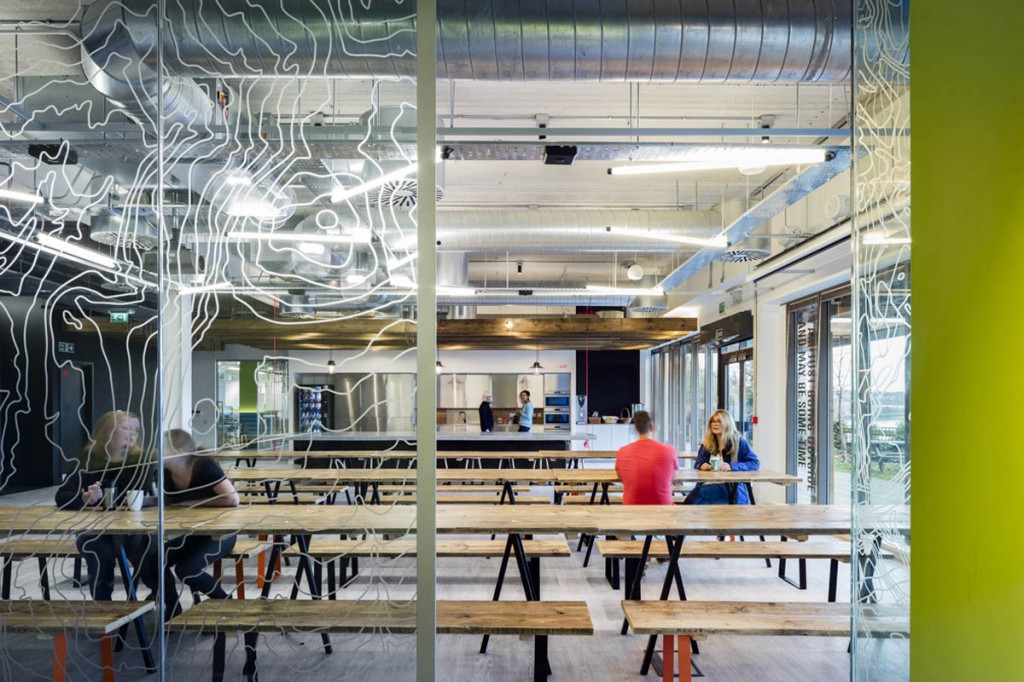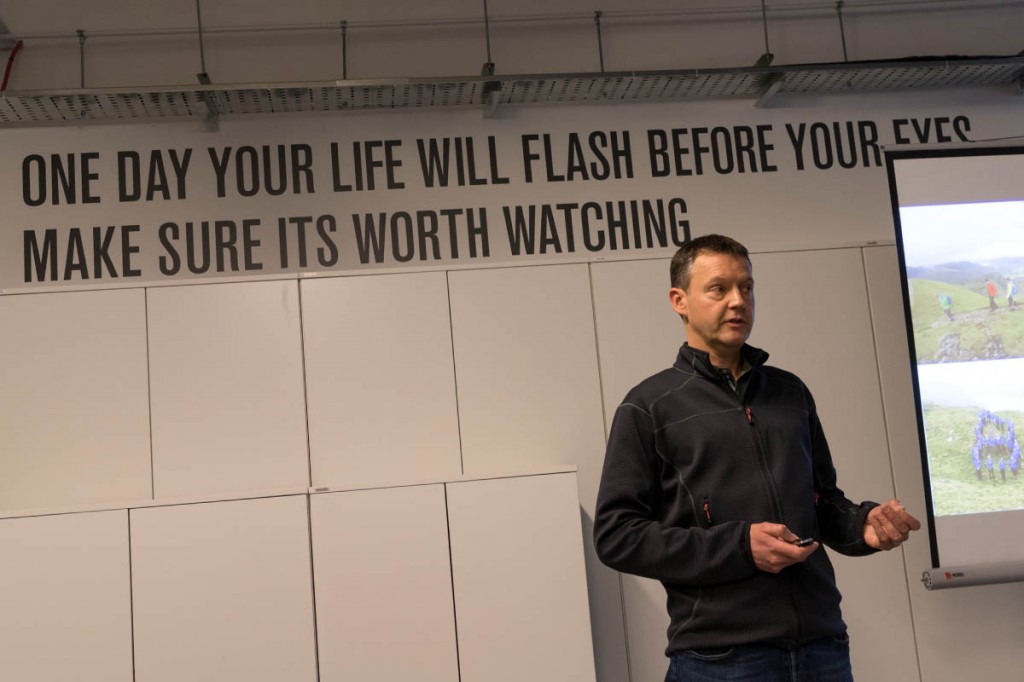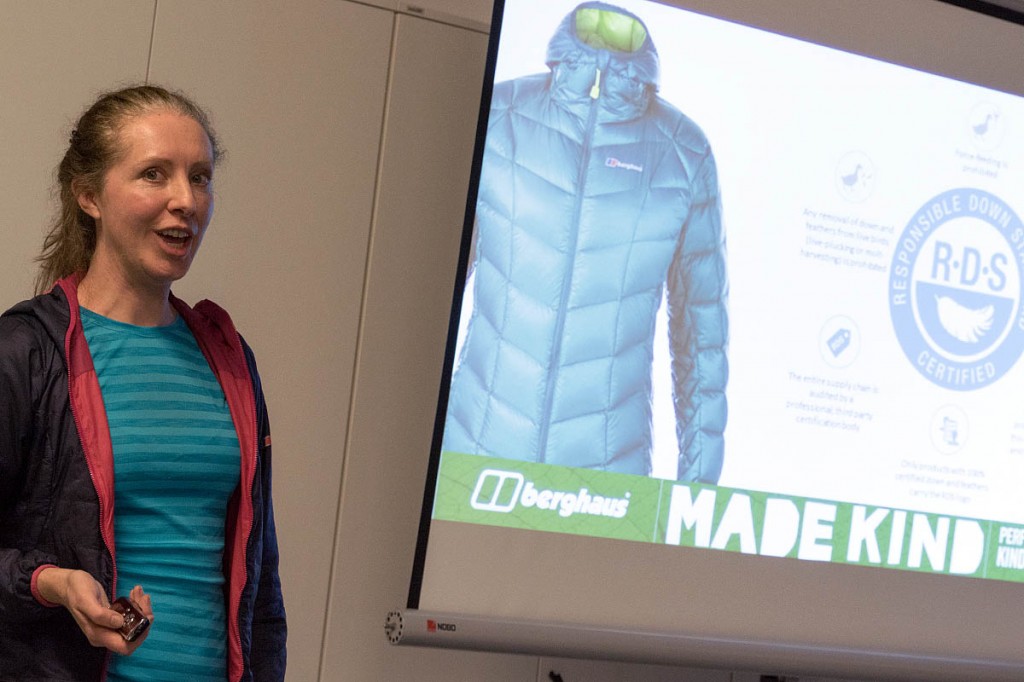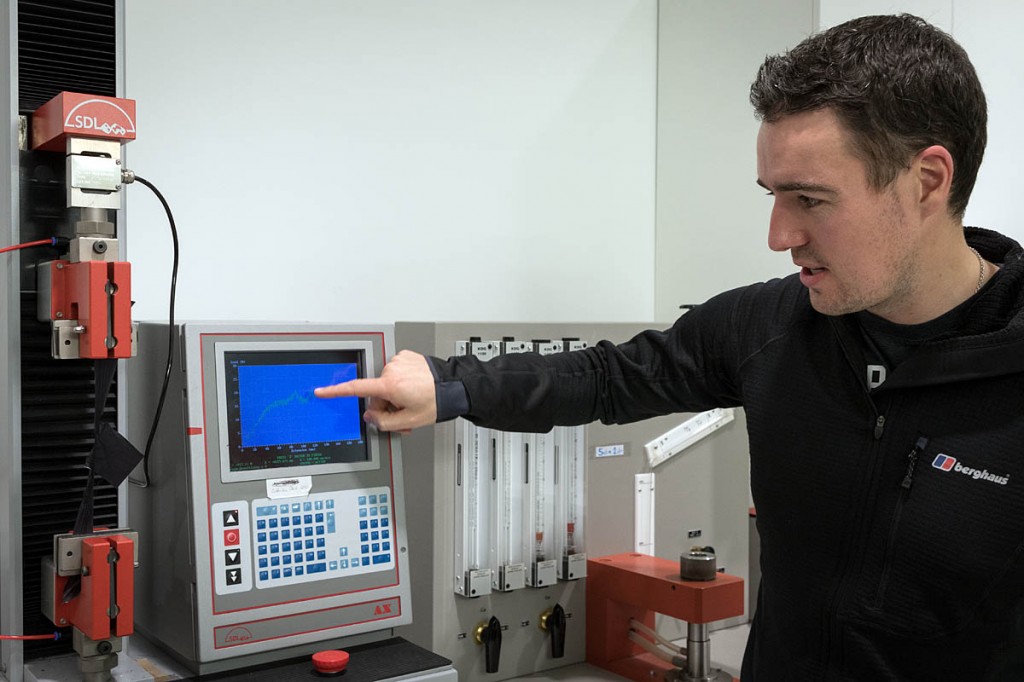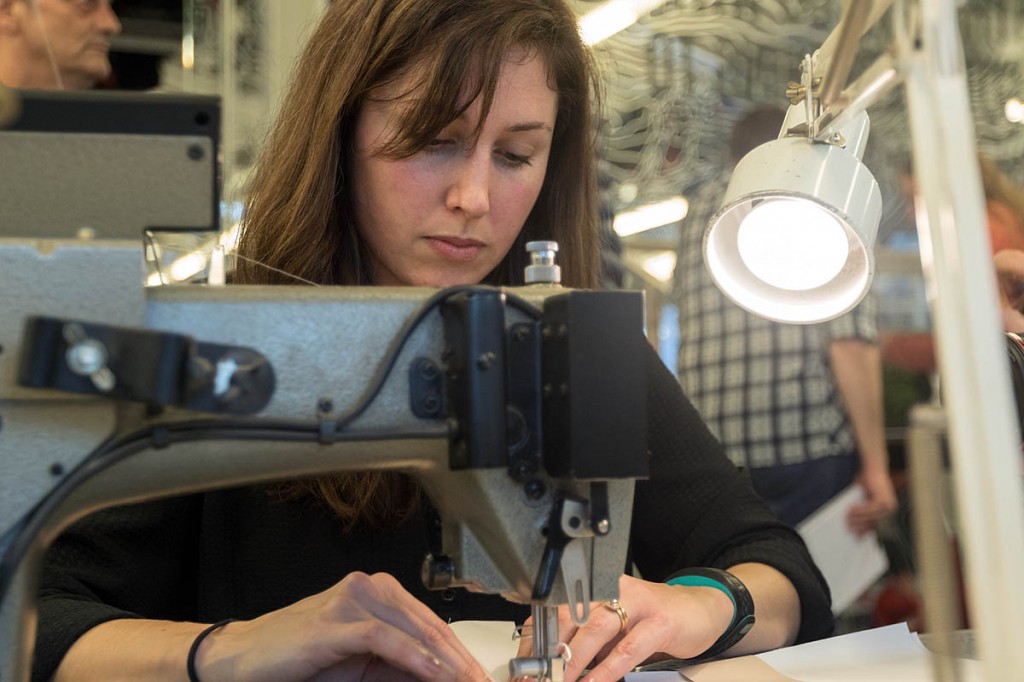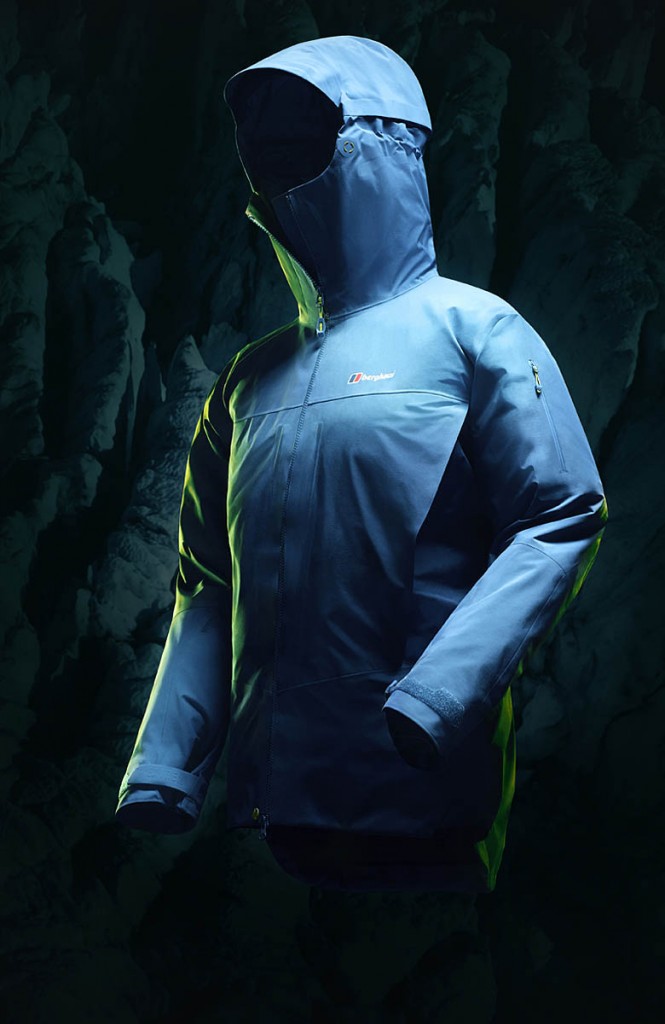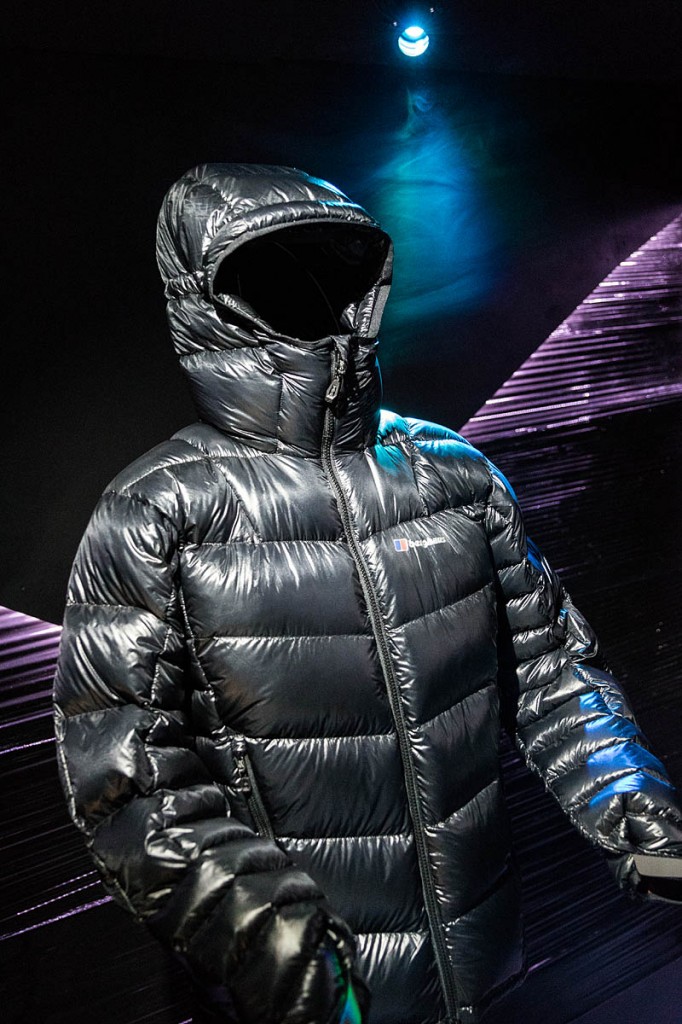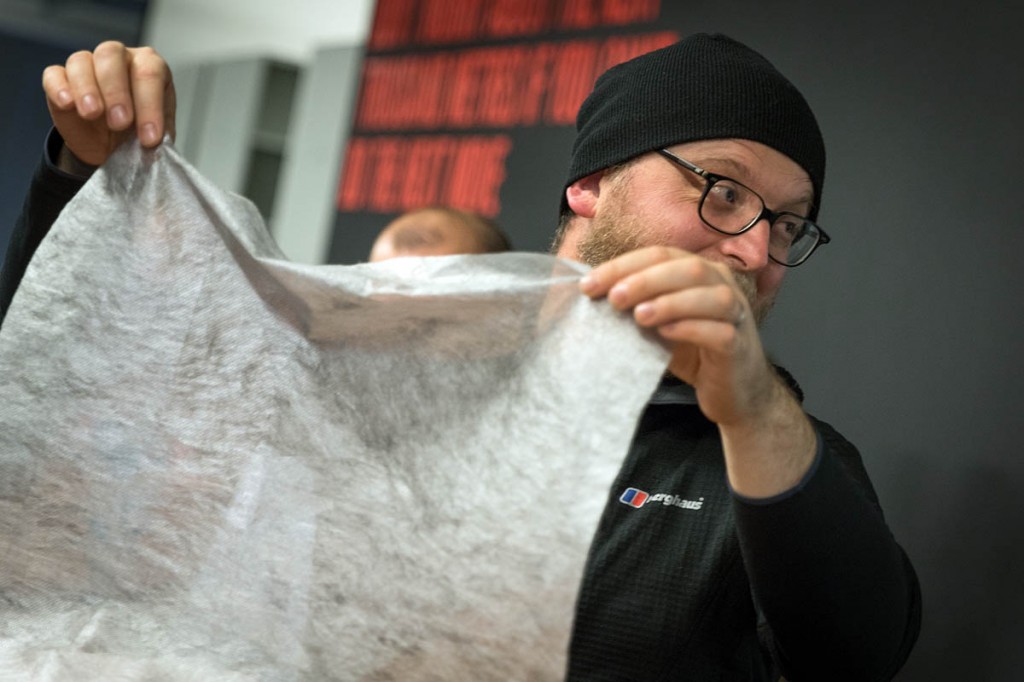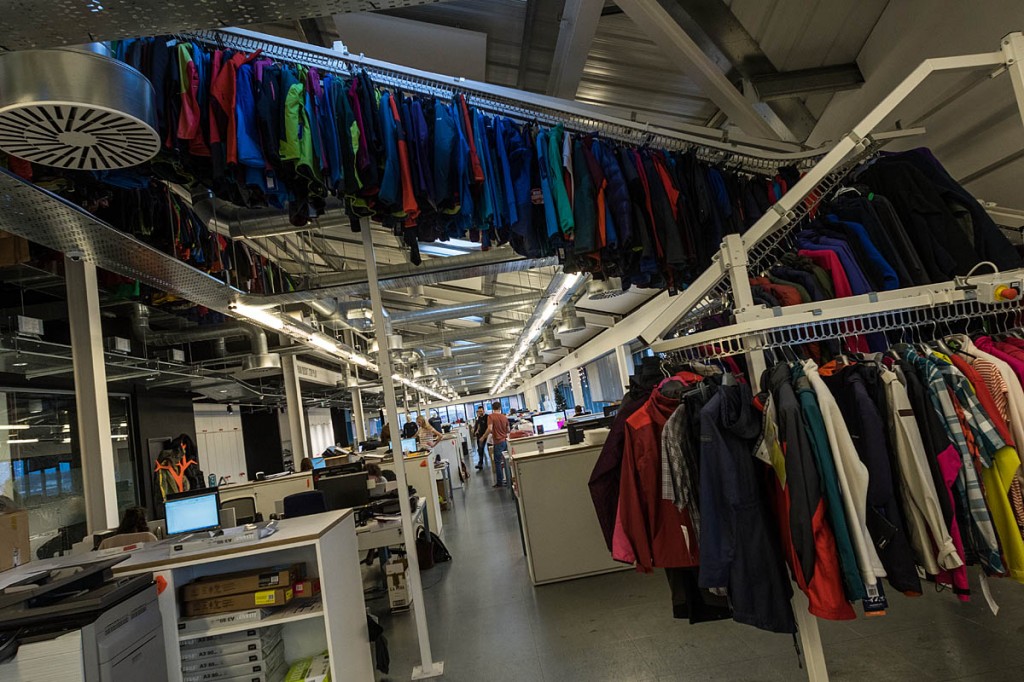One of the UK’s best known outdoor brands has completed a major refurbishment of its headquarters in the North-East of England.
As Berghaus approaches its 50th anniversary, it has invested in a complete overhaul of its Sunderland base, which it says will set the company up for the next half century.
The Berghaus brand is one of the most recognisable in the UK outdoor world: it says it has 89 per cent brand awareness and 65 per cent of consumers say they see Berghaus being worn on the hill or in the street.
In 1966, keen mountaineers Peter Lockey and Gordon Davison set up the LD Mountain Centre shop in Newcastle upon Tyne after their frustration at finding decent outdoor gear. Out of this grew their own Berghaus brand, which was bought in 1993 by London-based Pentland Brands.
From 1985, Lockey and Davison gave out prototypes to top mountaineers such as Chris Bonington, Pete Boardman and Joe Tasker, and these items formed the core of Berghaus’s Extrem range. Joe Simpson and Simon Yates were wearing Extrem prototypes during the fraught expedition described in the book and film Touching the Void.
Alan Hinkes also wore Extrem clothing during his 14 ascents of the world’s 8,000m mountains.
In 1999, Berghaus moved to a purpose-built headquarters overlooking the River Wear in Sunderland.
A company spokesperson said: “Although minor work has been undertaken in the intervening years, this is the first full refurbishment of the headquarters and came on the back of Berghaus signing a new 13-year lease.”
Interior design work and planning was managed by Katie Greenyer, creative director at fellow Pentland brand Red or Dead. The brief was to deliver a practical work space that also reflected the company’s Live for Adventure brand message and encouraged a collaborative, creative environment for staff who are based in Sunderland.
The spokesperson said: “Although products are not manufactured or warehoused in the Berghaus headquarters, all design and development work takes place on site, including that for the cutting-edge products introduced by the dedicated MtnHaus innovation team.
“The building houses a product and materials testing laboratory, pattern cutting and sample room, and facilities for the team of clothing, footwear, rucksacks and accessories designers.
“Berghaus HQ can accommodate up to 140 staff and is home to a wide range of departments, including product management, marketing, operations, sales, customer services, quality assurance, corporate responsibility, finance and human resources.”
The senior executive team, led by brand president Richard Leedham, is also based in the building. Facilities on the two floors include product showrooms, staff dining room, meeting and conference facilities, and showers and changing rooms.
Design touches at the new Sunderland base include a chalet-style communal dining area, made from recycled wood and scaffold planks that also line the ceiling throughout the ground floor and reception.
The reception desk itself represents a routed map of Sunderland with global and local colloquialisms. The rope-lined stairwell incorporates knots that are seen throughout the building, including on storage cabinets.
Berghaus said, wherever possible, refurbishment work has been completed using sustainable materials and methods. Energy and water-saving principles have also been applied and there are multiple recycling points on both floors.
A ‘sky rail’ lines the ceiling of the first floor and holds both archive and current products, and quotations from outdoor athletes associated with Berghaus, such as Sir Chris Bonington and Leo Houlding, can be found on windows and other surfaces on both floors.
Richard Leedham said: “This has been a major project for Berghaus and has had an impact on everyone who works for the business.
“The team has coped extremely well with any disruption and we are delighted with the final outcome. Here in north-east England, we now have a world-class headquarters where we can continue to design and develop some of the best outdoor products on the planet.
“As Berghaus heads towards its 50th birthday in 2016, we have an excellent base from which to plan for the next 50 years.”
grough, along with other outdoor journalists, saw at first-hand the design, testing and quality control facilities at the Sunderland site, and heard how Berghaus is developing better performing clothing and also tackling the environmental impact of outdoor gear.
The company’s corporate sustainability officer Elaine Gardiner said the company was the first British brand to become part of the bluesign system. It has also teamed up with Colourkind to introduce a much more environmentally friendly way of dyeing its yarn.
Traditionally, yarn such as nylon and polyester is dyed after being extruded into the filaments that are eventually woven into clothing. The new system uses pellets of raw nylon that have already had pigment applied, before being turned into the yarn.
Compared with regular processes, Berghaus Colourkind fabric dyeing uses fewer stages, resulting in savings of 89 per cent in water use, 63 per cent fewer chemicals used, and a 60 per cent reduction in CO2 emissions. Ms Gardiner said the CO2 saving equates to the amount produced by driving around the equator twice.
Exclusive to Berghaus, Colourkind partnered with Gore-Tex in a new fabric that is 100 per cent waterproof, while also being kinder to the environment. The fabric combines a waterproof and breathable two-layer Gore-Tex membrane with a 40 denier ripstop nylon Colourkind face.
Berghaus is using the fabric in the new Island Peak collection of men’s and women’s all-season walking jackets and pants which will go on sale in autumn-winter 2016.
Berghaus said it has also taken environmental impact into consideration when choosing other materials that make up the garments. In the Island Peak 3-in-1 Hydroloft jacket, the Hydroloft Elite in the inner features 50 per cent recycled fibres, and recycled fleece is used in the men’s and women’s Island Peak 3-in-1 jackets.
In the test lab with controlled temperature and humidity, we saw the various machines that test for water repellency, breathability, abrasion resistance, tear strength, insulation. Next door is the department which makes prototypes and along with cutting tables and sewing machines, there is a custom-made down chamber for filling insulated clothing to the right fill power.
The prototype department is where Extrem clothing starts its life, with consultation with mountaineers and athletes such as Leo Houlding, who accompanied our visit, Angelika Rainer and Mick Fowler who regularly posts first routes in far-flung Himalayan peaks while wearing gear designed in collaboration with the brand’s Mtn Haus innovation team.
The Extrem range, Berghaus’s highest-performance collection, is being completely relaunched for autumn-winter 2016.
The company said ground-breaking features, exceptional design and tailoring, and the best fabrics and components available, have been combined to create the most technical range of mountaineering clothing that Berghaus has ever released.
It said: “Berghaus believes that the new Extrem Pro 8000 is the most advanced mountaineering shell jacket now available.
“It is made out of three-layer Gore-Tex Pro Shell, in a combination of two face fabrics. Key wear areas around the hood, shoulders, hem and lower arms have an extremely durable 70 denier face. The main body features an exclusive lightweight 40D face, developed in partnership with WL Gore especially for the range.
“Not only is it extremely tough, but it also delivers outstanding water-shedding performance, helping to maintain its light weight and breathability during extended use.”
Berghaus explained that the fabric has the lowest wet pick-up of any fabric. This is a measure of the penetration of the durable water-resistant treatment; the more wet pick-up, the less breathability in the rain.
Athletes such as Leo Houlding have told Berghaus that stretch fabrics don’t work as well as they want when they’re tackling climbs and reaching for holds, so the company has developed its new Xpanse concept, designed to provide the best level of adaptable and adjustable garment technology for mountaineering.
Its spokesperson said: “The Xpanse Back offers a new and unique approach to stretch and garment construction. A stormproof box pleat and internal lightweight stretch mesh provide unrivalled freedom of movement across the back and shoulders, perfect for when reaching the harder moves.
“Providing around 20 per cent better freedom of movement than standard construction, the Xpanse Back also amplifies ventilation at the rear of the jacket.”
Paul Cosgrove, Extrem category manager, explained that a simple concept such as the Xpanse Back is very difficult to put into production, and getting the Gore-Tex membrane formed into the pleat is a breakthrough.
Another feature of the jacket is the Xpanse Faceguard, a front-gusseted extra expansion panel with breather holes to provide an option for additional protection over the mouth and nose during the most hostile conditions.
A novel innovation on the Pro 8000 jacket is the Xpanse Hood. Berghaus has used a system of magnets to allow the hood to expand for use with a helmet and then snap back into place when the helmet is not in use, delivering much better fit and weather protection in either state.
The wearer has simply to pull up the hood to expand it, and then release it to allow it to close. The system uses less excess fabric, which also serves to reduce weight and improve comfort. Berghaus said the expensive French-produced magnets in the system produce a very focused magnetic field to minimise interference with items such as compasses and watches or even pacemakers.
Berghaus said it has applied uncompromising attention to detail in every aspect of the Extrem 8000 Pro’s build, from pattern cutting to the highly specified seam construction, with a 3mm seam allowance and 13-14 stitches per inch – seven to eight is standard.
“A seam-free continuous panel around the front, sides and rear waist enhances comfort under a harness,” the spokesperson said. “Bonded zip, pocket and placket construction feature throughout the jacket, along with high tensile shockcord. Pleated volume in the cuffs accommodates mountain gloves and the centre front zip features bottom engagement inset to prevent snagging and ensure ease of connection.
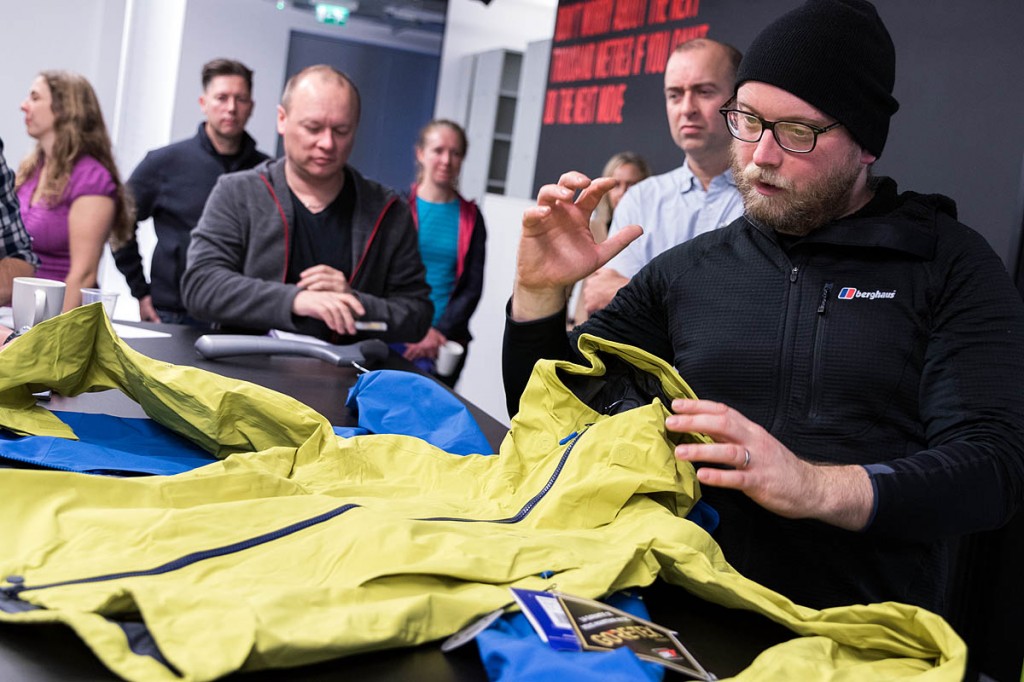
Berghaus Extrem category manager Paul Cosgrove explains the features of the Extrem 8000 Pro and 7000 Pro jackets
“The hem uses v-cut tailoring to create a slim profile under a pack or climbing harness and allow unrestricted step high movement, and there is a stitch free bonded hem shockcord channel.”
Other features on the Extrem 8000 Pro include: two large hand pockets with 3D panel construction to ensure they gape and allow fast venting during high exertion. Hand pockets incorporate extremely lightweight internal mesh to allow fast airflow. There are two large Napoleon chest pockets, a discreet left-arm bicep pocket with bonded ultra-slim YKK AquaGuard zip; an internal zipped security pocket; YKK AquaGuard pocket zips for added weather resistance; microfleece comfort lining on the inside neck; extremely robust and tactile Cohaesive cordlock adjustment system around the face and lower hem.
Leo Houlding said the 8000 Pro is the best jacket he’s worn and feels ‘like a shield’ when it’s on. It has a classic British look and wouldn’t look out of place on James Bond, he added.
The Extrem 8000 Pro weighs 590g for a medium sized garment and will cost £450 when it goes on sale on 1 August next year. Waterproof rating is 28,000mm and breathability is less than 6 RET, a rating where the lower the number the better the performance.
There will also be a 7000 Pro jacket sharing many of its big cousin’s features and costing £350. It will tip the scales at 520g.
The other big hitter in the company’s Extrem range relaunch is the Ramche Down 2.0 Jacket.
Building on its predecessor’s success, the Ramche 2.0 is lighter, warmer and more durable.
Berghaus pioneered water-resistant down with the launch of Hydrodown, delivering sustained water resistant insulation performance in extreme conditions. For autumn-winter 2016, Hydrodown forms part of the Berghaus Madekind initiative and uses Nikwax’s PFC-free hydrophobic down, which provides water repellency during use for up to 16 hours.
All Berghaus down is also Responsible Down Standard certified to guarantee ethical sourcing, with consumers being able to use a product serial number to identify online exactly where the down in their jacket came from.
The Ramche 2.0 uses 183g of 90/10 down-feather mix 850 fill goose Hydrodown and three-zone bodymapping ensures the optimum distribution of the insulation, while offset baffle construction eliminates cold spots in the core of the body. A crucial enhancement to the down comes in the form of new Reflect aluminium mesh.
Reflect Mesh is a heat reflective technology that improves thermal efficiency by up to 10 per cent. The mesh, which has every fibre coated in aluminium in a permanent treatment, has been sewn into the core of the Ramche 2.0 and reflects heat back into the jacket without inhibiting breathability. Extensive testing by Berghaus proved that locating the Reflect mesh in the core – sitting between the offset baffles – was more effective than lining the jacket with it, as a lining was too close to the body allow for noticeable heat reflection.
Berghaus developers say these innovations equate to an improvement in 2C in the wearer’s temperature which could, they point out, be the difference between life and death in extreme conditions.
The Berghaus materials team has developed a brand new face fabric for the Ramche 2.0. A super-lightweight 7 denier 100 per cent polyamide material (22g/m2), the material is windproof, water-resistant, breathable and twice as strong as its predecessor. It combines a 7D yarn for weight with a 30D ripstop pattern for strength in the fabric, leading to a weight saving of 12 per cent.
Mick Fowler used a sample of the Ramche 2.0 during his successful expedition to Gave Ding, and sent Berghaus this feedback: “The Ramche 2.0 was absolutely brilliant in temperatures that dipped to around -30C. It was also really tough compared to the previous version. At one point I got it caught in my abseil device and had to abseil a fair way with the fabric caught, but there was only superficial damage.”
Other features on the Ramche 2.0 include a low-profile helmet-compatible hood with front face adjustment and adjustment at the rear of the head, and stiffened with micro wire; an internal stretch gaiter on the hood to improve fit and prevent cold air entry; two way YKK Vislon centre-front zip, designed to be used with a pack or harness; two large hand pockets with wind strips behind the zips; ergonomically shaped easy-grab zip pulls for use with gloves; single-handed adjustment at the lower hem to keep out the elements and prevent heat loss; adjustable cuffs with easy-grab tabs that can be handled with gloves; and durable hook and loop fabric around the cuffs that work well in wet, snowy and icy conditions.
Berghaus said: “The original Ramche jacket has an excellent reputation, earning extremely positive reviews from Berghaus athletes, mountain guides, specialist media and retailers.
“The Ramche 2.0 is 13 per cent lighter – 452g for size large –10 per cent warmer, has a face fabric that is 100 per cent tougher, and delivers a 23 per cent increase in warmth-to-weight ratio.
“Sitting at the top of the Extrem insulation range, it aims to set a new standard in mountaineering down performance.”
The Ramche 2.0 will cost £360 when it goes on sale in 2016.
The Reflect material will also be used in the Nunat Reflect Jacket, which will also have the Hydrodown powered by Nikwax filling, and Pertex Quantum face fabric.
From next year, all Berghaus’s products that were previously branded Extrem, Mtn Haus developed, and Vapourlite will be brought together under the Extrem line.
The Extrem Micro Down jacket also has Pertex Quantum fabric and 750 fill Hydrodown powered by Nikwax and will retail at £190 and weighs 414g in size medium.
The Reversa jacket is an insulated hoody with one side offering windproof insulation while reversing the garment gives better breathability for when you’re working hard. The 357g jacket will sell for £170.
More details of Berghaus products are available on its website.
